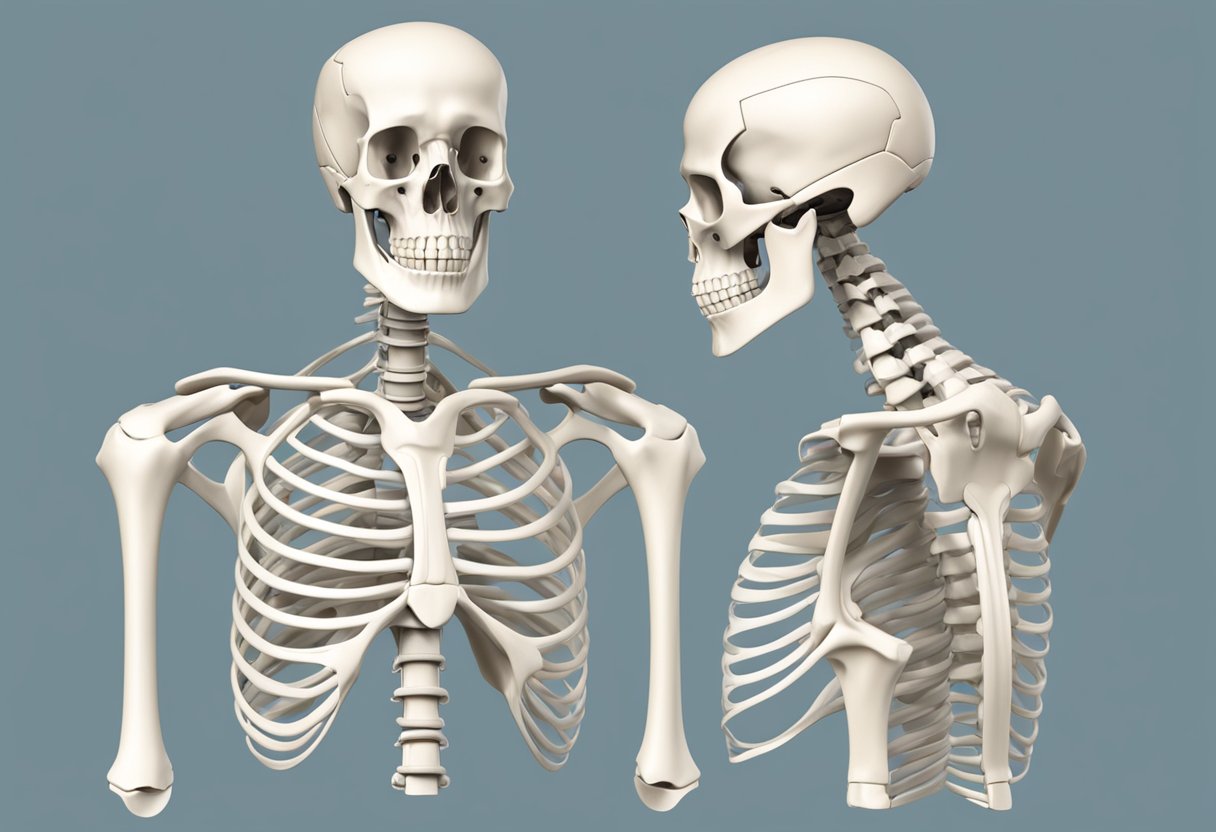Stretching is most often part of a workout routine. It’s usually enjoyable. Wonder why? Some scientific explanations exist, both mental and physical.
The first reason is tension relief. Tense, tight muscles can hurt or distress you. Stretching can ease this tension, offering a calming, comforting effect.
Then, stretching can stimulate blood circulation, enhancing oxygen and nutrient supply to muscles. This process aids healing and eases soreness. It also promotes flexibility and movement range, making daily activities effortless.
Contents
Scientific Reasons For Enjoying Stretching
Many people use stretching before or after workouts. It entails extending muscles to augment mobility. But what makes it enjoyable?
The joy of stretching relates to muscle spindle and Golgi tendon receptor activation. These messengers relay signals to the spinal cord and brain, which it perceives as relieved tension or stretch.
Increased blood flow to muscles, stimulated by stretching, helps alleviate muscle firmness and discomfort. Moreover, it boosts synovial fluid production, reducing friction by lubricating the joints.
Research has also shown that stretching can activate the parasympathetic nervous system, which is responsible for the body’s rest and relaxation response. This can help reduce stress and promote feelings of calmness and relaxation.
However, it’s important to note that stretching should be performed correctly to avoid injury. Overstretching or stretching cold muscles can lead to strains and sprains. It’s recommended to warm up before stretching and to hold each stretch for at least 30 seconds.
Overall, the science behind stretching explains why it feels good and can provide numerous benefits for the body when performed correctly.
Physical Benefits of Stretching
Stretching has numerous physical benefits that contribute to overall health and wellbeing. Here are some of the key benefits:
Increased Blood Flow
Stretching helps to increase blood flow to the muscles, which can improve circulation throughout the body. This increased blood flow can help to deliver oxygen and nutrients to the muscles, which can improve their function and reduce the risk of injury. Additionally, stretching can help to reduce muscle soreness and stiffness, which can improve overall mobility and flexibility.
Improved Posture
Stretching can also help to improve posture by reducing muscle tension and promoting better alignment throughout the body. When the muscles are tight and tense, it can lead to poor posture, which can cause pain and discomfort over time. By stretching regularly, individuals can help to reduce muscle tension and improve their posture, which can lead to a more comfortable and pain-free lifestyle.
Enhanced Flexibility
Another key benefit of stretching is enhanced flexibility. Regular stretching can help to improve flexibility and range of motion in the joints, which can improve overall mobility and reduce the risk of injury. Additionally, stretching can help to reduce muscle tension and improve muscle function, which can improve overall athletic performance and reduce the risk of injury during physical activity.
In conclusion, stretching has numerous physical benefits that can improve overall health and wellbeing. By incorporating stretching into a regular exercise routine, individuals can improve circulation, posture, and flexibility, which can lead to a more comfortable and pain-free lifestyle.
Psychological Advantages of Stretching
Stretching not only benefits physical health but also has positive effects on mental wellbeing. Incorporating stretching into a daily routine can help reduce stress and improve mental clarity.
Stress Relief
Stretching has been shown to reduce stress levels by releasing tension in the muscles. When the body is stressed, muscles tend to tighten up, leading to discomfort and aches. Stretching helps to relax these muscles and release the tension, providing relief from stress.
In addition, stretching can also help to regulate breathing and reduce the heart rate, which are both indicators of stress. By focusing on breathing and stretching, individuals can reduce stress levels and promote relaxation.
Clear Mind
Stretching offers benefits for the mind. Stressed bodies can struggle to stay alert. More blood and oxygen reach the brain when you stretch. This aids in thinking more clearly.

Similarly, better posture can come from stretching. This is good for your mental health. Bad posture may cause discomfort and might hurt your mood. So, stretching leads to confidence and positivity.
In brief, stretching assists in both physical and mental ways. Everyday stretching helps you avoid stress and think clearly. This makes for a healthy and joyful living.
Hormones in Stretching
Stretching increases flexible movements. But it has another bonus; it works with your hormones. Hormones release when stretching and this is one reason why it’s pleasurable.
Release of Endorphins
Endorphins naturally relieve pain and boost mood. They release when stretching. This cuts down pain and uplifts your mood. So, stretching is good for people with chronic pain or sadness.
Serotonin Increase
Serotonin controls mood, hunger, and sleep. Stretching heightens serotonin production and release. This boosts your mood and reduces stress. For this reason, stretching eases stress.
Stretching helps boost body hormones. It can lessen pain, better your mood and lower stress levels.
Various Stretching Styles and Their Impact
Stretching is an excellent way to enhance flexibility, motion range, and relieve muscle tightness. Various stretching styles offer their own unique advantages. Here, we’ll talk about three common types of stretches and how they help.
Dynamic Stretching
Dynamic stretching is all about performing actions similar to the activity you’re about to do. It aids in blood flow, warms up muscles, and promotes motion range. Athletes frequently use this stretch before workouts or contests. Dynamic stretches include:
- Raising knees high
- Kicking your rear
- Twisting lunges
- Circling arms
Static Stretching
Static stretching requires you to hold a stretch, usually for 10 to 30 seconds. It enhances flexibility, eases muscle tightness, and invigorates motion range. Often, people do this stretch after a workout or during a cool-down routine. Static stretches include:
- Hamstring stretch
- Quad stretch
- Shoulder stretch
- Tricep stretch
PNF Stretching
PNF (Proprioceptive Neuromuscular Facilitation) stretching means contracting and relaxing muscles while you stretch. It boosts flexibility, broadens motion range, and eases muscle tightness. Physical therapists often use this stretch to help patients bounce back from injuries. PNF stretching examples include:
- Stretch: Contract-Relax Method
- Stretch: Hold-Relax Technique
- Stretch: Contract-Relax-Agonist-Contract Style
Here’s the quick version: Dynamic stretches heat you up before sports. Static stretches cool you down, make you bendy, and chill out your muscles. PNF stretches help you heal from injuries.
Misunderstandings About Stretching
There’s a lot of wrong info about stretching. Believing in these false ideas can mess up your stretch routine.
Some folks believe stretching before playing sports stops injuries. Not true. Stretching does increase how far you can stretch and move. However, it’s a warm-up, not a shield against hurt. Get your muscles and joints ready for action is what really guards you.
Here’s another myth. Some people believe once you stretch, you become more flexible at once. That’s false. True, normal stretching makes it easier to flex. But it doesn’t happen overnight. You gotta stick to it to see a real change in flexibility.
Another belief, stretching is only for jocks or regular exercisers. Wrong! Everyone gains from stretching. It fine-tunes posture, relaxes muscles, and dodges injuries.
Last misconception, stretching is only for some muscles, like legs or back. Nope. Every main muscle group needs stretching to stay flexible and balanced. Never ignore a single one.
Overall, it is important to understand the true benefits of stretching and not fall victim to common misconceptions. By incorporating stretching into your daily routine and understanding its true benefits, you can improve your overall health and well-being.
Conclusion
In conclusion, stretching feels good for a variety of reasons. Firstly, it can help to release tension in the muscles, which can reduce feelings of tightness and discomfort. Secondly, stretching can improve blood flow to the muscles, which can help to reduce inflammation and promote healing. Finally, stretching can also help to improve flexibility and range of motion, which can enhance athletic performance and reduce the risk of injury.
While there is still much to learn about the mechanisms behind why stretching feels good, it is clear that this simple practice can have a significant impact on overall health and wellbeing. Whether you are an athlete looking to improve your performance or simply someone seeking to alleviate muscle tension and discomfort, incorporating stretching into your daily routine can be a highly effective way to achieve your goals. So why not give it a try and see how it can benefit you?
Frequently Asked Questions
What causes the good feeling after stretching?
Stretching activates the proprioceptors in the muscles, which send signals to the brain to release endorphins. Endorphins are the body’s natural painkillers and mood enhancers, which can create a sense of euphoria and pleasure.
Why does stretching make us calm?
Stretching eases muscle tightness, which leads to a calm feeling. Better blood flow is another stretching bonus. It also boosts relaxation and lowers stress.
Does stretching help ease muscle pain?
Yes, it does. Stretching increases blood flow, washing away toxins and reducing swelling. It also boosts flexibility and movement range, lowering injury and muscle pull risks.
What good does morning stretch do?
Morning stretches can boost circulation and stretchiness. They help lessen muscle stiffness and aches. Also, they rev up energy and mood. Now, that’s a neat kickstart to your day.
Why does stretching feel so good – scientifically?
You bet! Science says stretching activates muscle-attached proprioceptors. They tell the brain to pump out endorphins. These natural chemicals are body’s own painkillers and cheer-boosters. They make us feel amazingly good.
Does stretching let out endorphins?
Certainly! Stretching does trigger endorphin release. Muscle proprioceptors send out the signal during a stretch. Endorphins – body’s own feel-good chemicals and painkillers, bring about sheer joy.












